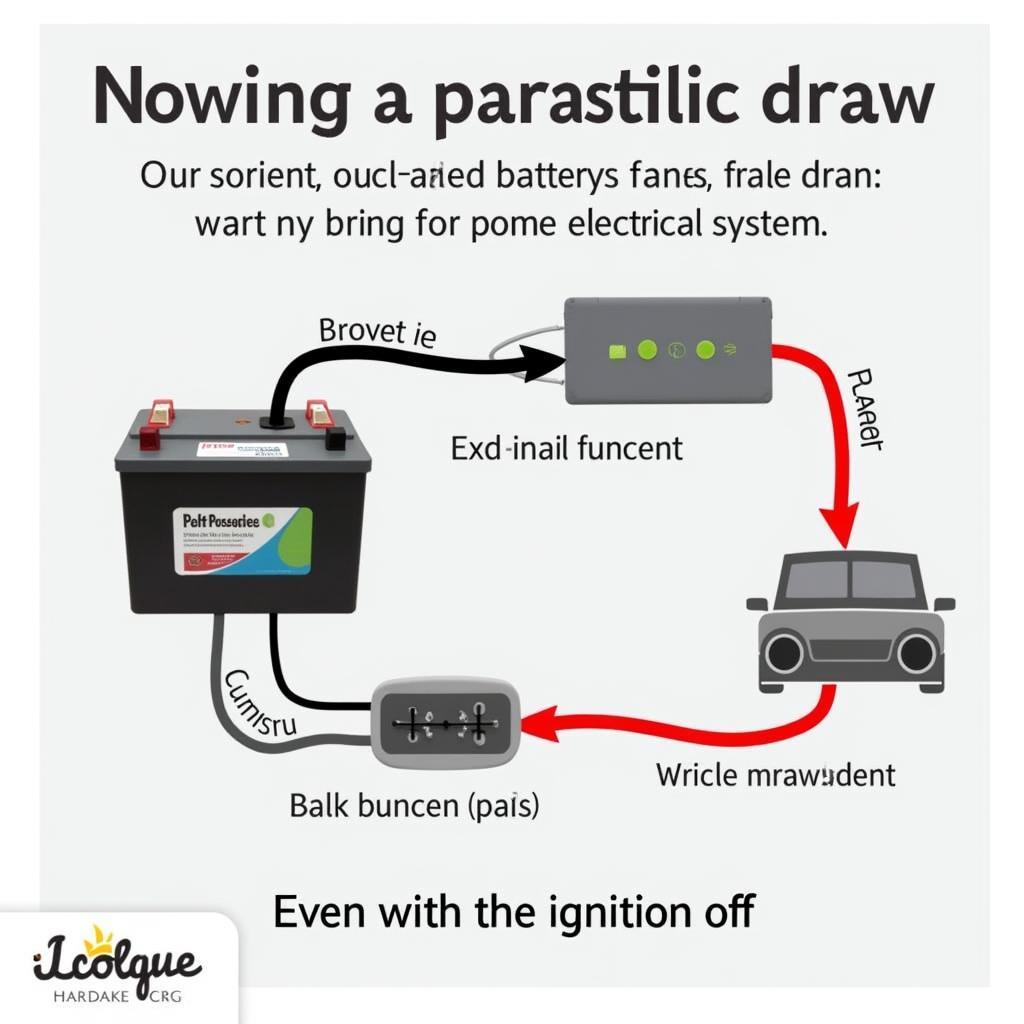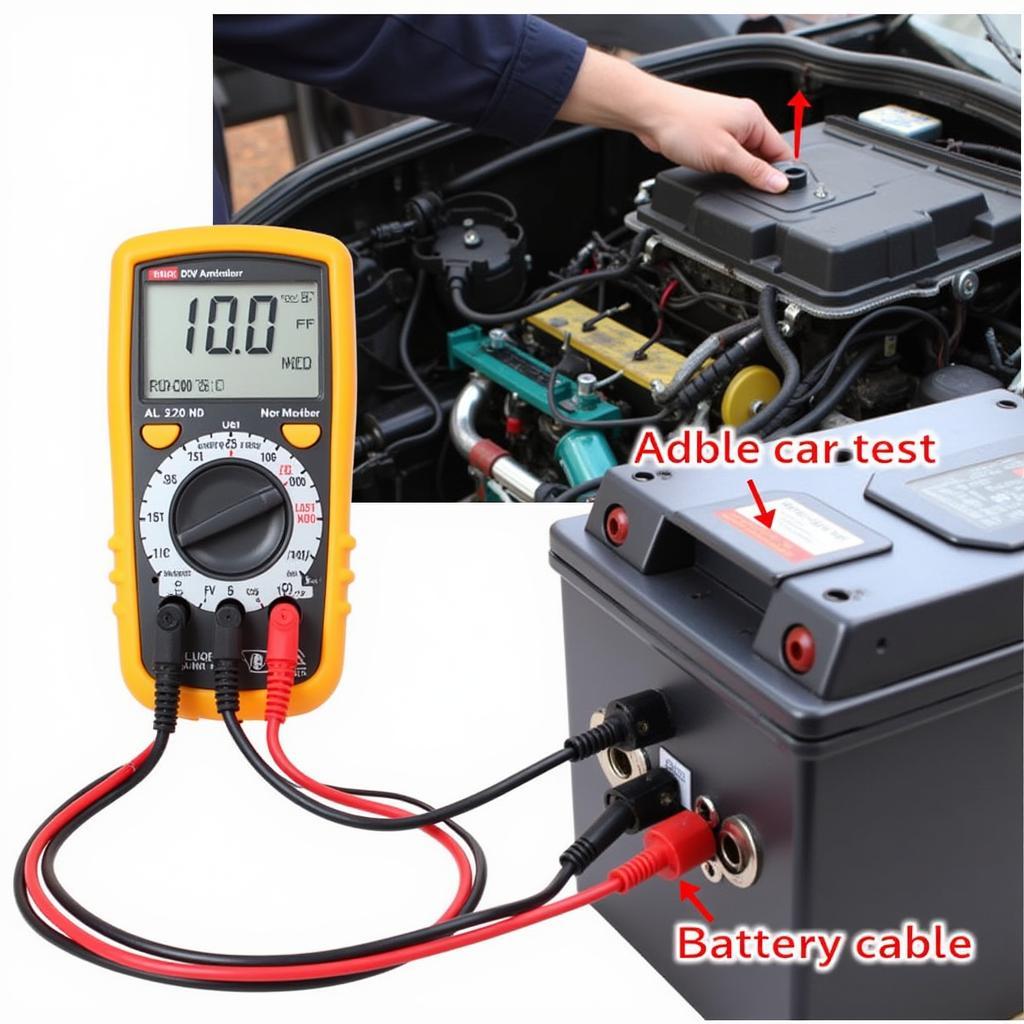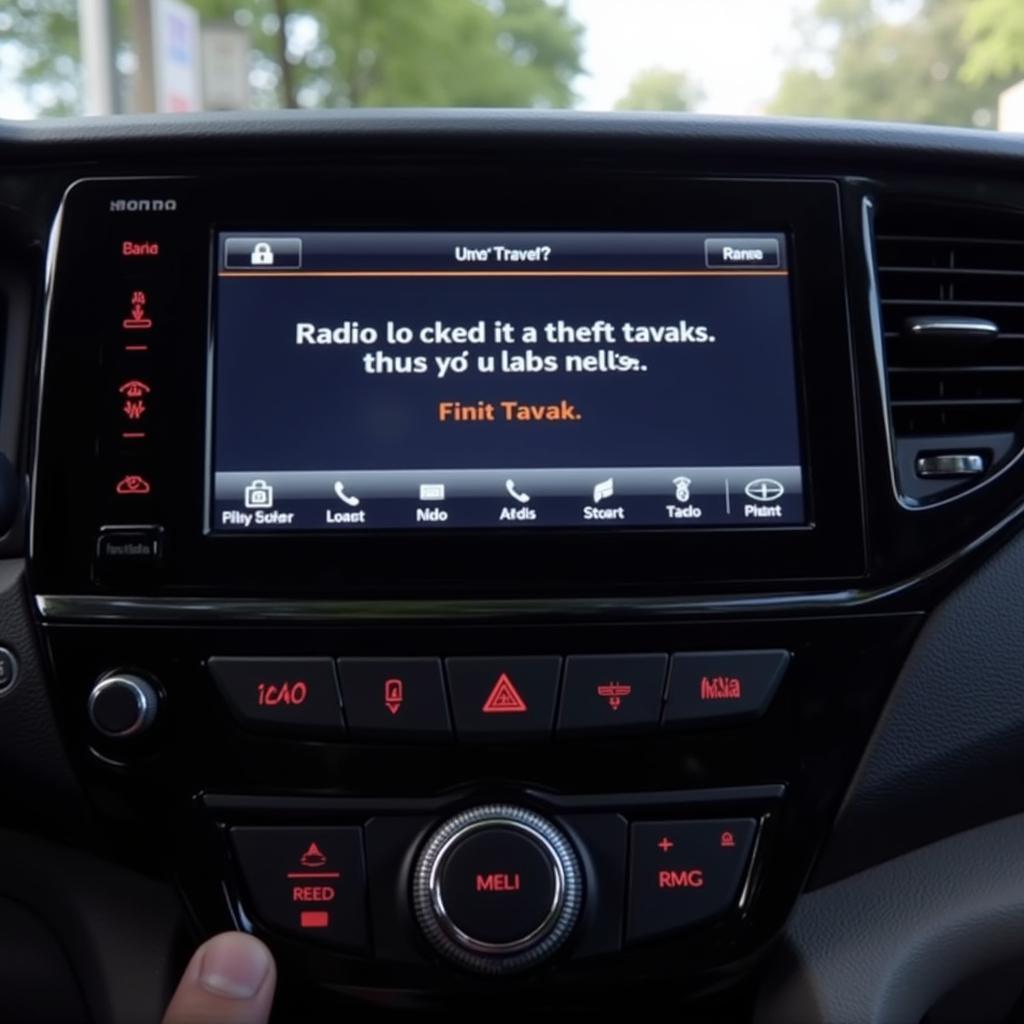A dead car battery is frustrating, but a mysteriously dead battery is even worse. An auto battery drain test can help pinpoint the culprit and get you back on the road. This guide provides a comprehensive approach to identifying and resolving parasitic battery drain, from simple checks to more advanced diagnostic techniques.
Understanding the Auto Battery Drain Test
An auto battery drain test aims to identify any electrical components consuming power when the vehicle is off, leading to a slow but steady drain on your battery. This “parasitic draw” can be caused by faulty relays, malfunctioning modules, or even something as simple as a glove box light staying on. Understanding how to perform this test is crucial for any car owner.
Why Is My Car Battery Draining?
Several factors can contribute to battery drain. Common culprits include:
- Faulty Alternator: While not directly a drain, a failing alternator can prevent the battery from charging properly, leading to eventual depletion.
- Extreme Temperatures: Both hot and cold weather can affect battery performance.
- Old Age: Batteries have a limited lifespan and degrade over time.
- Parasitic Draw: This is the most common cause of mysterious battery drain, where a component continues to draw power even when the ignition is off.
 Illustration of Parasitic Draw in a Car
Illustration of Parasitic Draw in a Car
Performing a Basic Auto Battery Drain Test
A basic auto battery drain test can be done with a multimeter. Here’s how:
- Safety First: Disconnect the negative battery cable. This prevents shorts during the test.
- Connect the Multimeter: Set the multimeter to DC amps. Connect the red lead to the negative battery terminal and the black lead to the negative battery cable.
- Observe the Reading: A reading above 50 milliamps generally indicates a parasitic draw.
- Isolate the Culprit: Start pulling fuses one by one, observing the multimeter reading after each one. A significant drop in the reading indicates the circuit with the problem.
 Using a Multimeter for a Car Battery Drain Test
Using a Multimeter for a Car Battery Drain Test
Advanced Auto Battery Drain Testing
If the basic test doesn’t pinpoint the issue, more advanced techniques may be necessary. These often involve specialized diagnostic tools and a deeper understanding of the vehicle’s electrical system.
Using Diagnostic Software for Auto Battery Drain Test
Modern vehicles are equipped with complex electronic control units (ECUs). Diagnostic software can access these ECUs and provide valuable insights into their power consumption, helping identify any abnormal activity. This is where the expertise of a qualified technician comes into play.
Remote Diagnostics and Software Solutions
Remote diagnostics and software installations are revolutionizing auto repair. These technologies allow technicians to analyze vehicle data and even install software updates remotely, saving time and providing quicker solutions to battery drain issues.
“Remote diagnostics has been a game-changer,” says John Smith, Lead Automotive Electrical Engineer at Advanced Auto Solutions. “We can identify and resolve complex electrical problems without the customer even having to bring their car to the shop.”
Preventing Future Battery Drain Issues
Regular maintenance and proactive checks can minimize the risk of future battery drain problems:
- Routine Battery Testing: Have your battery tested regularly, especially during extreme temperatures.
- Minimize Accessory Use: Avoid leaving lights, radio, or other accessories on when the engine is off.
- Prompt Repairs: Address any electrical issues promptly to prevent them from escalating and potentially draining your battery.
Conclusion
An auto battery drain test is a crucial diagnostic procedure for identifying and resolving frustrating battery issues. From basic multimeter tests to advanced diagnostic software, understanding the various approaches can empower you to take control of your vehicle’s electrical health and prevent that dreaded dead battery scenario. Don’t let a drained battery leave you stranded; perform an auto battery drain test and stay on the road.
FAQ
-
How long should a car battery last? Typically, car batteries last between 3 and 5 years.
-
What are the signs of a bad alternator? Dim headlights, flickering interior lights, and a warning light on the dashboard are common signs of a failing alternator.
-
Can I perform an auto battery drain test myself? Yes, a basic test can be performed with a multimeter. However, more complex issues may require professional assistance.
-
How much does a car battery drain test cost? The cost varies depending on the complexity of the problem and the labor rates of the repair shop.
-
What is a parasitic draw in a car? A parasitic draw is a small but constant drain on the battery even when the vehicle is off.
“Regular battery checks can save you a lot of headaches down the line,” adds Jane Doe, Senior Automotive Technician at Auto Repair Experts. “It’s a simple preventative measure that can significantly extend the life of your battery.”
- What is the best way to prevent a car battery from draining? Regular maintenance, prompt repairs, and mindful accessory usage are the best ways to prevent battery drain.


